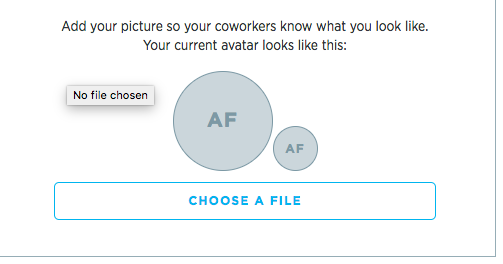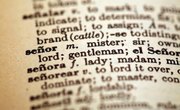English is a notoriously difficult language for non-native speakers to learn. It is not simply the vocabulary, the slang and the numerous strange syntactical and structural rules, English pronunciation also presents a number of challenges for speakers who are used to words being pronounced only one way.
What Are English Pronunciation Rules?
When people from other countries try to learn English, spelling and pronunciation often flummox them. This is true even of people who speak one of the Romance languages, from which all European languages are derived.
Romance languages come from Latin, so unlike Japanese, Sanskrit, Tagalog or Urdu, Romance language uses the same alphabet with some exceptions and accents. English has very arbitrary-seeming rules, and spelling and pronunciation can change from word to word. For example, the words bough and trough are spelled very similarly but pronounced completely differently.
In addition to the strange endings of words, there are letters in English whose pronunciation varies from word to word. C, g and y are chief among these letters whose presence, depending on what letters follow them and what letters they are followed by, can be confounding for English language learners. Another challenge for English language learners are the sounds of long and short vowels and the sound of combinations of consonants. However, once these pronunciation rules in English are learned and mastered, language learners will be far more confident in their speech.
What Are Some Difficulties in English Pronunciation?
As in most Romance languages, the way that words look when they are written down is different from the way the words sound when they are spoken. This isn't all about contraction, slang or lazy speech; many times, words that are spelled the same way are pronounced differently. Similarly, letters that behave one way in a word may behave very differently in another word.
A perfect example of this is the phenomenon known as "variant vowels." Variant vowels are vowels that behave differently depending on the other letters around them. For example, on its own, a long "e" is typically pronounced "Eeee." However, if the "e" is placed after an "a" as in "faerie," it no longer retains its long sound, and instead makes the vowel preceding it long.
Long and short vowel sounds can be exceptionally confusing. It can be difficult to know when a vowel is short and when a vowel is long. For the sake of simplicity, you can assume that anytime a vowel is at the end of a syllable or a word, that vowel is typically long unless it is an "e," in which case it is likely silent. Even the rules have exceptions and exceptions to the exceptions.
Why Is "The" Pronounced Two Different Ways?
One of the most confounding words in English pronunciation is also one of the most common: the word "the." An article that is used in almost every sentence, "the" is pronounced in one of two ways: "thuh," or "thee." The pronunciation of "the" is related to several factors, and they are actually relatively easy to memorize.
One of the key identifiers of how "the" is supposed to be pronounced is the beginning of the word that follows. If the word following the word "the" begins with a vowel sound, not necessarily a vowel, the word is pronounced "thee." If the word following the word "the" begins with a consonant sound, the word is pronounced "thuh." We say "thuh" store, but '"thee" elephants. We also say "thee" youngest, even though "youngest" begins with a consonant sound, and "y" is sometimes a vowel.
Another situation in which you might pronounce "the" as "thee" is in the case that you are trying to emphasize the following word, or indicate that you are referring to a proper noun when normally the word would simply constitute a noun. Examples of this could be "The president," "the Michael Jordan," "the Philip Glass." The pronunciation of "thee" indicates that you are referring to the one and only, a specific individual or entity.
What Are the Pronunciation Rules for "ed" Endings?
Another confusing aspect of the English language is the treatment of pronunciation of words in the past tense, or with the ending -ed. These can be pronounced in three different ways. While technically the pronunciation of "ed" is "ehhd," the earlier parts of the word have everything to do with the way that particular "ed" is pronounced. When the suffix "ed" is applied it is intended to indicate that whatever verb is at the base of the word happened in the past.
When the verb at the base of the word ends on voiceless consonant sound like "p," "k," "s" or "th," the -ed is pronounced as a "t" as in "parked," "pushed" or "hatched." This rule is consistent. If you are reading a word where the verb base ends on a voiced sound like "b," "v," g," "z," "j," "th" or "l," "m," "n," "r," the -ed will be pronounced like "d," as in "lobbed," "halved," "moved," "buzzed."
The third way that -ed is pronounced is with the sound of "id" or "ud." "This is the case whenever the base of the verb ends with the letters "d" or "t." This causes the -ed suffix at the end of the word to be pronounced more fully and prominently. Examples of this case are "carded," "looted," "matted" and "graduated."
What Are the Pronunciation Rules for the Letter G?
The letter "g" is one of the letters in English that wears many hats. For this reason, it can be exceptionally confusing and even confounding to non-native speakers who are attempting to master the pronunciation of the language. The letter G can be a hard sound as in "ground," a soft sound as in "ledge" and even an "f" sound, as in the word "trough." So what are the rules?
When the letter "g" is followed by the letters "e," "i," or "y," the g is soft, as in "gym," "gentleman" and "giant." When the "g" is followed by an "a" or a "u," it is pronounced with a hard "g" as in "gumdrop," "garret" or "gun." The "f" sound of the letter "g" is limited to instances where the g is followed by the letter "h." In these cases, the "h" softens the "g," as in "slough," "trough" and "rough". The similar spelling in these three words can help to alert non-native speakers to the fact that they are pronounced similarly.
What Are the Seven Syllable Types?
Something helpful for all English language learners is an understanding of syllables. Whether the learners are young children acquiring reading and phonics skills, or non-native speakers attempting to achieve fluency and conversationality in English, this is a key point. There are seven types of syllables in the English language.
- There is the "bossy r" syllable in which an "r" comes after the vowel. This makes the vowel long.
- The "team vowels" syllable, in which two vowels paired together make the long sound of the first vowel.
- A diphthong syllable, wherein two vowels together make a new sound, as in "boil" or "feign."
- The "consonant +-le" syllable where there is no accent on the syllable.
- The "open syllable," which ends with a long vowel
- The "closed syllable," which ends with a short vowel followed by a consonant.
- The "magic e" syllable, where the syllable ends with a silent "e" that makes the earlier vowel long.
Related Articles
References
- English Club: How to Pronounce the
- Rong Chang: Pronunciation Rules
- Glendale Community College: Phonics, Syllable and Accent Rules
- Busy Teacher: 7 Secret Pronunciation Rules Your Teachers Never Taught You (but You Should Teach Your ESL Students)
- Fluent U: 5 Things You Must Know to Understand All English Pronunciation Guides
- Make Take Teach: 7 Syllable Types Classroom Posters
Writer Bio
Ashley Friedman is a freelance writer with experience writing about education for a variety of organizations and educational institutions as well as online media sites. She has written for Pearson Education, The University of Miami, The New York City Teaching Fellows, New Visions for Public Schools, and a number of independent secondary schools. She lives in Los Angeles.











